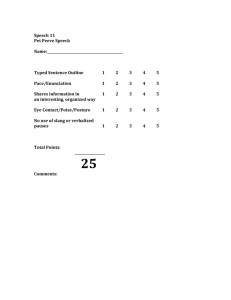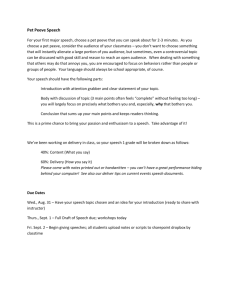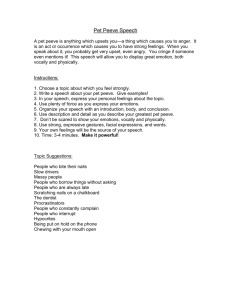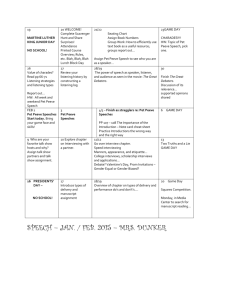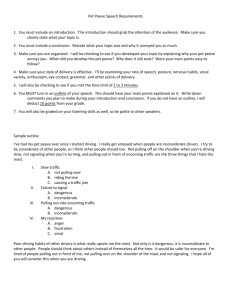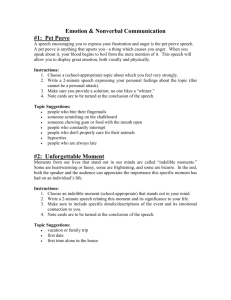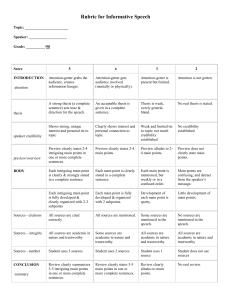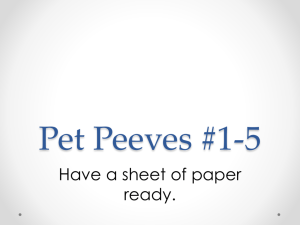SPC 1600: Public Speaking
advertisement
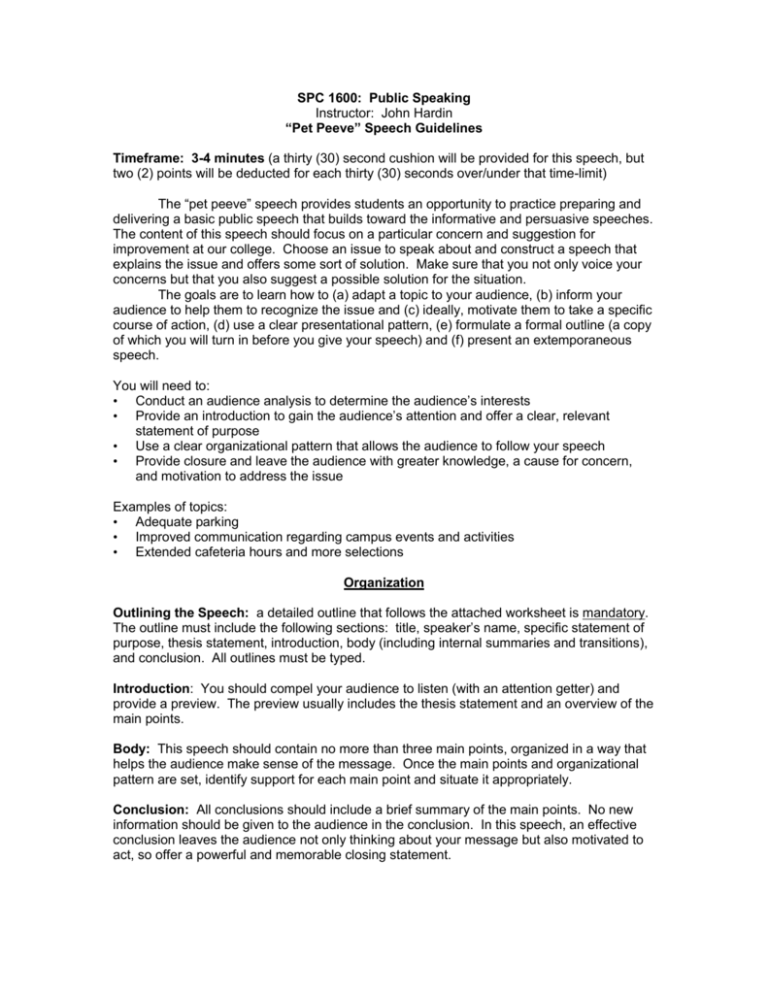
SPC 1600: Public Speaking Instructor: John Hardin “Pet Peeve” Speech Guidelines Timeframe: 3-4 minutes (a thirty (30) second cushion will be provided for this speech, but two (2) points will be deducted for each thirty (30) seconds over/under that time-limit) The “pet peeve” speech provides students an opportunity to practice preparing and delivering a basic public speech that builds toward the informative and persuasive speeches. The content of this speech should focus on a particular concern and suggestion for improvement at our college. Choose an issue to speak about and construct a speech that explains the issue and offers some sort of solution. Make sure that you not only voice your concerns but that you also suggest a possible solution for the situation. The goals are to learn how to (a) adapt a topic to your audience, (b) inform your audience to help them to recognize the issue and (c) ideally, motivate them to take a specific course of action, (d) use a clear presentational pattern, (e) formulate a formal outline (a copy of which you will turn in before you give your speech) and (f) present an extemporaneous speech. You will need to: • Conduct an audience analysis to determine the audience’s interests • Provide an introduction to gain the audience’s attention and offer a clear, relevant statement of purpose • Use a clear organizational pattern that allows the audience to follow your speech • Provide closure and leave the audience with greater knowledge, a cause for concern, and motivation to address the issue Examples of topics: • Adequate parking • Improved communication regarding campus events and activities • Extended cafeteria hours and more selections Organization Outlining the Speech: a detailed outline that follows the attached worksheet is mandatory. The outline must include the following sections: title, speaker’s name, specific statement of purpose, thesis statement, introduction, body (including internal summaries and transitions), and conclusion. All outlines must be typed. Introduction: You should compel your audience to listen (with an attention getter) and provide a preview. The preview usually includes the thesis statement and an overview of the main points. Body: This speech should contain no more than three main points, organized in a way that helps the audience make sense of the message. Once the main points and organizational pattern are set, identify support for each main point and situate it appropriately. Conclusion: All conclusions should include a brief summary of the main points. No new information should be given to the audience in the conclusion. In this speech, an effective conclusion leaves the audience not only thinking about your message but also motivated to act, so offer a powerful and memorable closing statement. Outline Worksheet for “Pet Peeve” Speech Title: Speaker: Specific Purpose: Thesis Statement: Introduction I. Attention-getter/“hook” II. Establish credibility and connection (speaker-topic-audience) III. Thesis statement to orient audience A. main point #1 B. main point #2 C. main point #3 (transition to body) Body I. Main point #1 A. support for main point (internal summary) (transition to next point) II. Main point #2 A. support for main point (internal summary) (transition to next point) III. Main point #3 A. support for main point (internal summary) (transition to conclusion) Conclusion I. Summary A. review main point #1 B. review main point #2 C. review main point #3 II. Motivation/Call to action III. Concluding thought - end with impact
